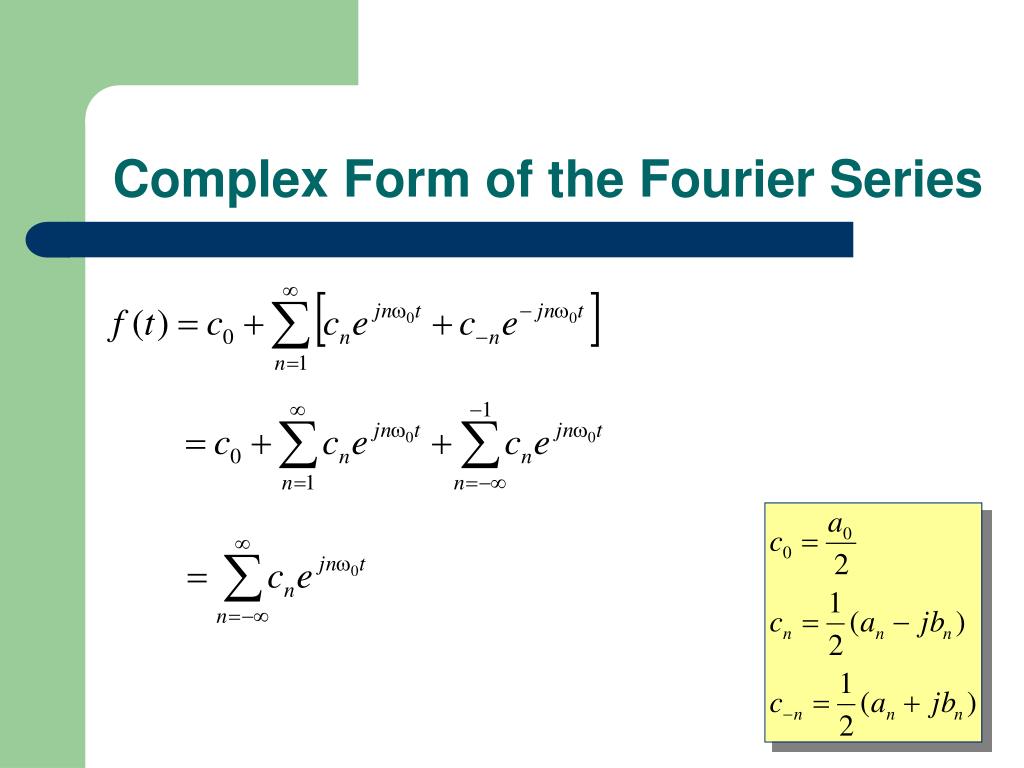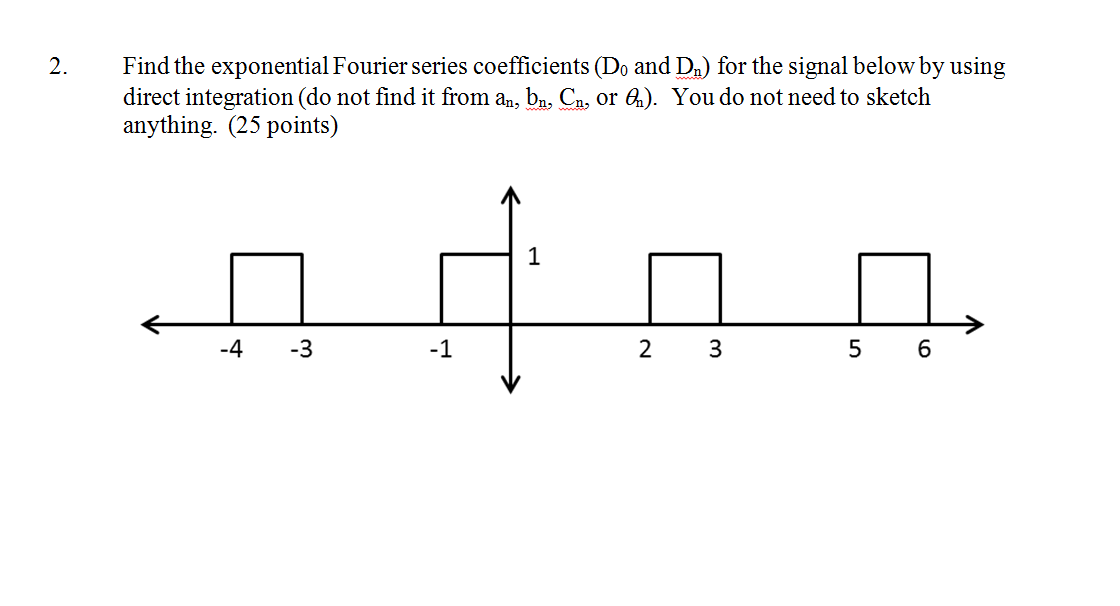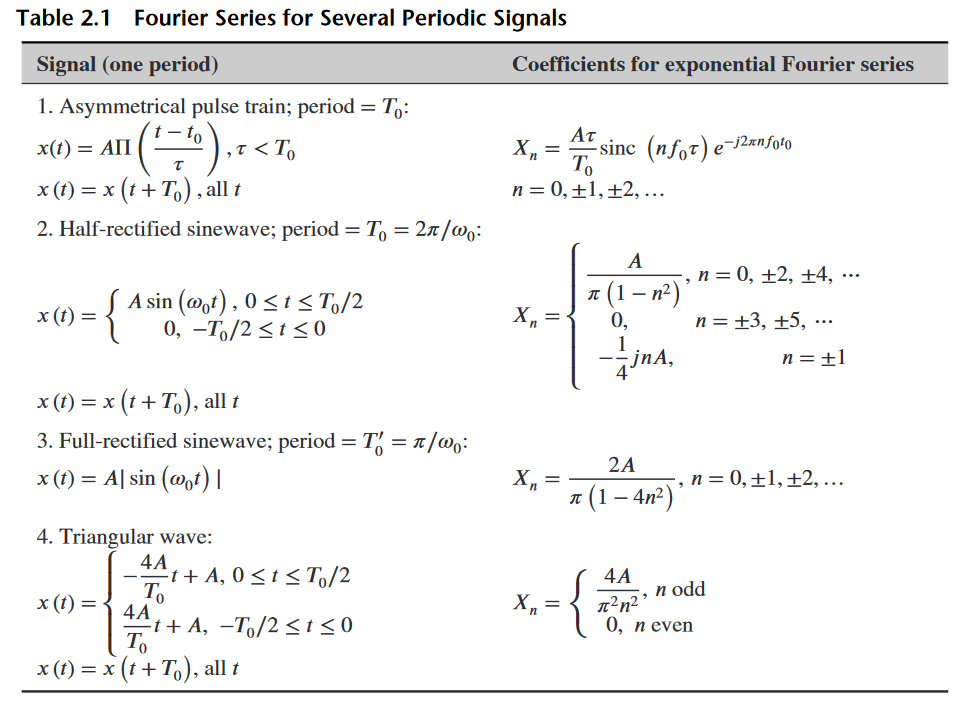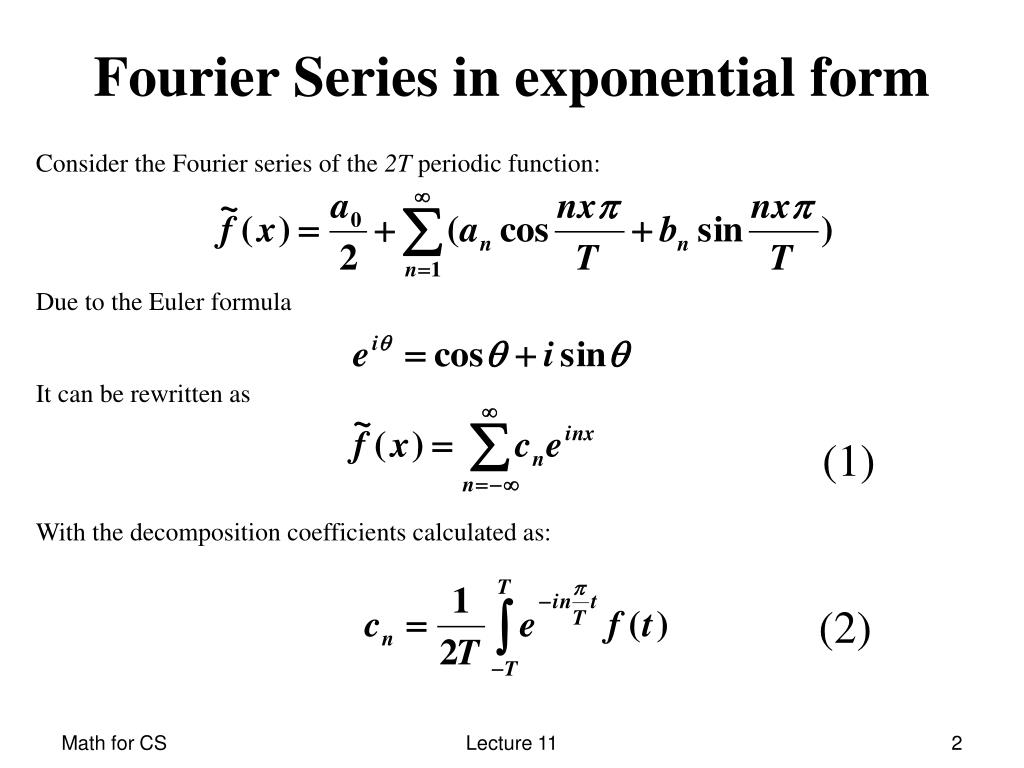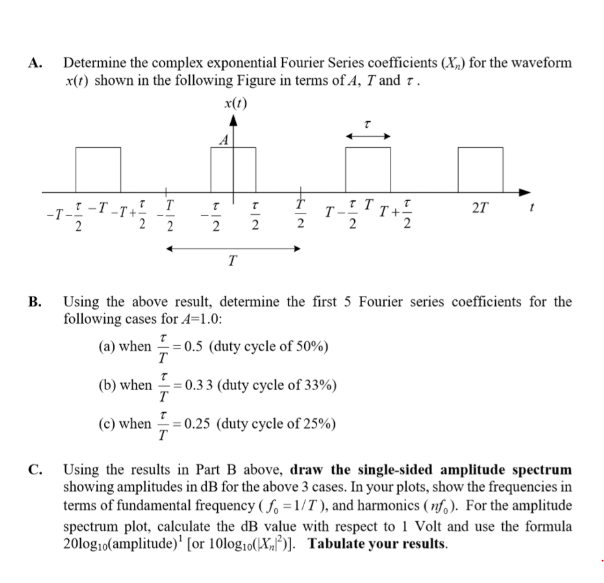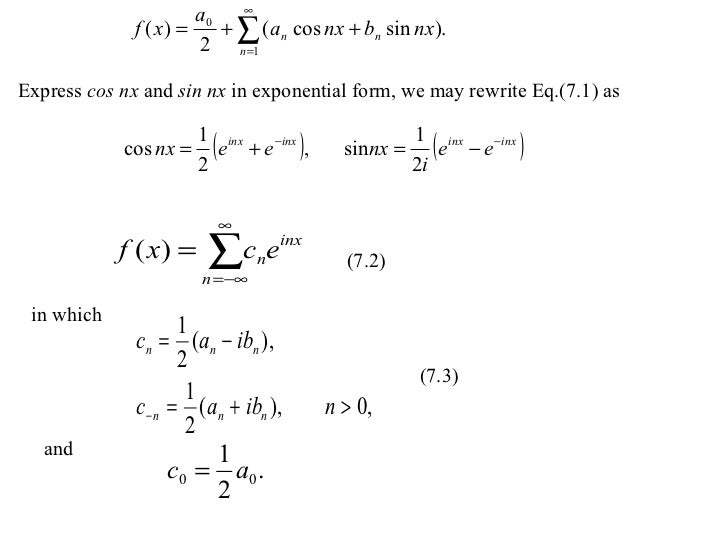Exponential Form Of Fourier Series
Exponential Form Of Fourier Series - The complex exponential as a vector note: Web the complex and trigonometric forms of fourier series are actually equivalent. Simplifying the math with complex numbers. Web a fourier series is an expansion of a periodic function in terms of an infinite sum of sines and cosines. Web the fourier series exponential form is ∑ k = − n n c n e 2 π i k x is e − 2 π i k = 1 and why and why is − e − π i k equal to ( − 1) k + 1 and e − π i k = ( − 1) k, for this i can imagine for k = 0 that both are equal but for k > 0 i really don't get it. But, for your particular case (2^x, 0<x<1), since the representation can possibly be odd, i'd recommend you to use the formulas that just involve the sine (they're the easiest ones to calculate). Web in the most general case you proposed, you can perfectly use the written formulas. Using (3.17), (3.34a)can thus be transformed into the following: We can now use this complex exponential fourier series for function defined on [ − l, l] to derive the fourier transform by letting l get large. Consider i and q as the real and imaginary parts
Web common forms of the fourier series. But, for your particular case (2^x, 0<x<1), since the representation can possibly be odd, i'd recommend you to use the formulas that just involve the sine (they're the easiest ones to calculate). Web calculate the fourier series in complex exponential form, of the following function: Amplitude and phase spectra of a periodic signal. Extended keyboard examples upload random. The fourier series can be represented in different forms. Web the complex fourier series expresses the signal as a superposition of complex exponentials having frequencies: Web the trigonometric fourier series can be represented as: As the exponential fourier series represents a complex spectrum, thus, it has both magnitude and phase spectra. Web the exponential fourier series coefficients of a periodic function x (t) have only a discrete spectrum because the values of the coefficient 𝐶𝑛 exists only for discrete values of n.
Web complex exponential series for f(x) defined on [ − l, l]. But, for your particular case (2^x, 0<x<1), since the representation can possibly be odd, i'd recommend you to use the formulas that just involve the sine (they're the easiest ones to calculate). Consider i and q as the real and imaginary parts K t, k = {., − 1, 0, 1,. Web the fourier series exponential form is ∑ k = − n n c n e 2 π i k x is e − 2 π i k = 1 and why and why is − e − π i k equal to ( − 1) k + 1 and e − π i k = ( − 1) k, for this i can imagine for k = 0 that both are equal but for k > 0 i really don't get it. Problem suppose f f is a continuous function on interval [−π, π] [ − π, π] such that ∑n∈z|cn| < ∞ ∑ n ∈ z | c n | < ∞ where cn = 1 2π ∫π −π f(x) ⋅ exp(−inx) dx c n = 1 2 π ∫ − π π f ( x) ⋅. Fourier series make use of the orthogonality relationships of the sine and cosine functions. Web both the trigonometric and complex exponential fourier series provide us with representations of a class of functions of finite period in terms of sums over a discrete set of frequencies. Power content of a periodic signal. Web the complex and trigonometric forms of fourier series are actually equivalent.
Trigonometric Form Of Fourier Series
Where cnis defined as follows: We can now use this complex exponential fourier series for function defined on [ − l, l] to derive the fourier transform by letting l get large. Simplifying the math with complex numbers. Web both the trigonometric and complex exponential fourier series provide us with representations of a class of functions of finite period in.
Solved 2. [45] Compute the exponential Fourier series
Web the exponential fourier series coefficients of a periodic function x (t) have only a discrete spectrum because the values of the coefficient 𝐶𝑛 exists only for discrete values of n. As the exponential fourier series represents a complex spectrum, thus, it has both magnitude and phase spectra. Power content of a periodic signal. Simplifying the math with complex numbers..
PPT Fourier Series PowerPoint Presentation ID390675
Web the complex and trigonometric forms of fourier series are actually equivalent. K t, k = {., − 1, 0, 1,. Web exponential fourier series a periodic signal is analyzed in terms of exponential fourier series in the following three stages: } s(t) = ∞ ∑ k = − ∞ckei2πkt t with ck = 1 2(ak − ibk) the real.
Complex Exponential Fourier Series YouTube
Compute answers using wolfram's breakthrough technology & knowledgebase, relied on by millions of students & professionals. Web the trigonometric fourier series can be represented as: F(x) ∼ ∞ ∑ n = − ∞cne − inπx / l, cn = 1 2l∫l − lf(x)einπx / ldx. Web complex exponentials complex version of fourier series time shifting, magnitude, phase fourier transform copyright.
Solved Find The Exponential Fourier Series Coefficients (...
Explanation let a set of complex exponential functions as, {. This can be seen with a little algebra. We can now use this complex exponential fourier series for function defined on [ − l, l] to derive the fourier transform by letting l get large. As the exponential fourier series represents a complex spectrum, thus, it has both magnitude and.
Fourier Series Exponential Representation Mathematics Stack Exchange
Compute answers using wolfram's breakthrough technology & knowledgebase, relied on by millions of students & professionals. Web complex exponential form of fourier series properties of fourier series february 11, 2020 synthesis equation ∞∞ f(t)xx=c0+ckcos(kωot) +dksin(kωot) k=1k=1 2π whereωo= analysis equations z c0=f(t)dt t 2z ck=f(t) cos(kωot)dttt 2z dk=f(t) sin(kωot)dttt today: Web common forms of the fourier series. The fourier series.
Solved 2.18 Obtain the complex exponential Fourier series
Web complex exponential series for f(x) defined on [ − l, l]. (2.1) can be written as using eqs. Web signals and systems by 2.5 exponential form of fourier series to represent the fourier series in concise form, the sine and cosine terms of trigonometric form, the fourier series are expressed in terms of exponential function that results in exponential.
PPT Lecture 11 PowerPoint Presentation, free download ID396272
Explanation let a set of complex exponential functions as, {. For easy reference the two forms are stated here, their derivation follows. The fourier series can be represented in different forms. Web a fourier series is an expansion of a periodic function in terms of an infinite sum of sines and cosines. Amplitude and phase spectra of a periodic signal.
Solved A. Determine the complex exponential Fourier Series
While subtracting them and dividing by 2j yields. Web the complex exponential fourier seriesis a simple form, in which the orthogonal functions are the complex exponential functions. For math, science, nutrition, history, geography, engineering, mathematics, linguistics, sports,. Using (3.17), (3.34a)can thus be transformed into the following: Explanation let a set of complex exponential functions as, {.
Fourier series
Web in the most general case you proposed, you can perfectly use the written formulas. We can now use this complex exponential fourier series for function defined on [ − l, l] to derive the fourier transform by letting l get large. Fourier series make use of the orthogonality relationships of the sine and cosine functions. Web the complex fourier.
As The Exponential Fourier Series Represents A Complex Spectrum, Thus, It Has Both Magnitude And Phase Spectra.
F(x) ∼ ∞ ∑ n = − ∞cne − inπx / l, cn = 1 2l∫l − lf(x)einπx / ldx. Jωt sin(ωt) ωt cos(ωt) euler’s identity: Simplifying the math with complex numbers. Explanation let a set of complex exponential functions as, {.
Problem Suppose F F Is A Continuous Function On Interval [−Π, Π] [ − Π, Π] Such That ∑N∈Z|Cn| < ∞ ∑ N ∈ Z | C N | < ∞ Where Cn = 1 2Π ∫Π −Π F(X) ⋅ Exp(−Inx) Dx C N = 1 2 Π ∫ − Π Π F ( X) ⋅.
For easy reference the two forms are stated here, their derivation follows. Web both the trigonometric and complex exponential fourier series provide us with representations of a class of functions of finite period in terms of sums over a discrete set of frequencies. Web the complex and trigonometric forms of fourier series are actually equivalent. The complex exponential as a vector note:
The Fourier Series Can Be Represented In Different Forms.
Web complex exponentials complex version of fourier series time shifting, magnitude, phase fourier transform copyright © 2007 by m.h. Web a fourier series is an expansion of a periodic function in terms of an infinite sum of sines and cosines. Web the complex exponential fourier series is the convenient and compact form of the fourier series, hence, its findsextensive application in communication theory. Using (3.17), (3.34a)can thus be transformed into the following:
Extended Keyboard Examples Upload Random.
Web complex exponential series for f(x) defined on [ − l, l]. Web common forms of the fourier series. Web signals and systems by 2.5 exponential form of fourier series to represent the fourier series in concise form, the sine and cosine terms of trigonometric form, the fourier series are expressed in terms of exponential function that results in exponential fourier series. Where cnis defined as follows:

![Solved 2. [45] Compute the exponential Fourier series](https://d2vlcm61l7u1fs.cloudfront.net/media/7b3/7b3c6052-f72f-4414-95e2-58d48961d476/phpwP5zLo.png)
